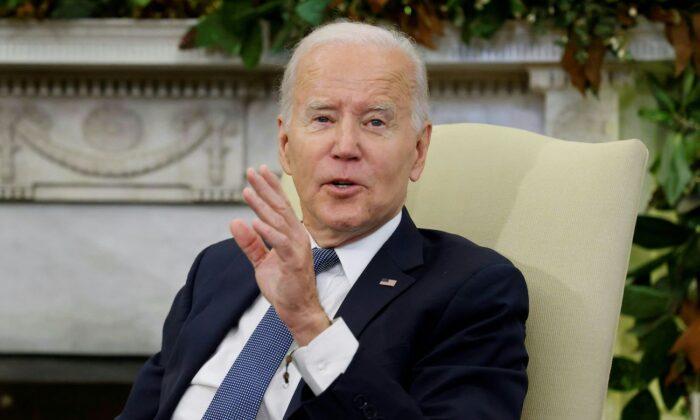The Biden administration is set to allow nearly 65,000 H-2B foreign visa workers to take on nonagricultural jobs in the United States over the next nine months.
According to the departments, the move marks the first time that two federal agencies have made the visas available for several allocations throughout the entire fiscal year, including the late second half.
The ruling comes as the number of Americans filing new claims for unemployment benefits soared to a three-month high in November amid rising layoffs.
“The department is making supplemental H-2B visas available earlier than ever, ensuring that American businesses can plan for their peak season labor needs,” said Mayorkas in a statement on Monday. “At a time of record job growth, these visas will also provide a safe and lawful pathway to the United States for noncitizens prepared to take jobs that are not filled by American workers.”

Rules of Employment
In issuing the final rule, DOL and DHS said that 44,700 H-2B foreign visas will be available to returning workers who have received the visa or were otherwise granted H-2B status during one of the last three fiscal years, while the remaining 20,000 visas are reserved for nationals of El Salvador, Guatemala, Honduras, and Haiti, regardless of whether or not they are returning workers.The visas will be issued at various stages throughout the year.
Employers who seek workers from El Salvador, Guatemala, Honduras, and Haiti in the first half of 2023 will need to file a petition beginning Dec. 15, 2022, while those who are requesting an employment start date in the second half of 2023 will have to file a petition no earlier than 15 days after the second half statutory cap is reached, according to officials.
Those employers who are seeking returning workers, regardless of country of nationality, for the first half of 2023 will need to file such petitions starting from Dec. 15, 2022, and no later than Mar. 31, 2023. Approximately 18,216 H-2B visa’s have been put aside for the first half of 2023, the department’s said.
Employers who wish such workers to start in the early second half of 2023 will need to request employment start dates from Apr. 1, 2023, to May 14, 2023, filing these petitions no earlier than 15 days after the second half statutory cap is reached, the departments said.
Employers who want such workers to start in the late second half of 2023 will need to request employment start dates from May 15, 2023, to Sept. 30, 2023, and must file these petitions no earlier than 45 days after the second half statutory cap is reached.
Jobless Claims on the Rise
According to officials, the H-2B temporary nonagricultural worker visas will allow employers in the United States to hire non-citizens solely to perform nonagricultural labor or services for a limited time only.“The petitioner must have a temporary need for services or labor to be performed, i.e., a one-time occurrence, peak load need, seasonal need, or intermittent need,” according to the departments.
Employers who wish to hire H-2B workers will also need to prove that they are “suffering or will suffer impending irreparable harm without the ability to employ all of the H-2B workers requested on the petition” and must also “take a series of steps to test the U.S. labor market,” including providing evidence to the DOL that proving that there are not enough U.S. workers available or able to do the temporary work.
They must also prove that employing the temporary foreign worker will not adversely affect the wages and working conditions of similarly employed U.S. workers, among other things.
Continuing claims, meanwhile, rose to 1.55 million, the highest level since March.
The unemployment rate is at 3.7 percent, with approximately 6 million Americans unemployed in November, of which 5.6 million are actively looking for a job.





